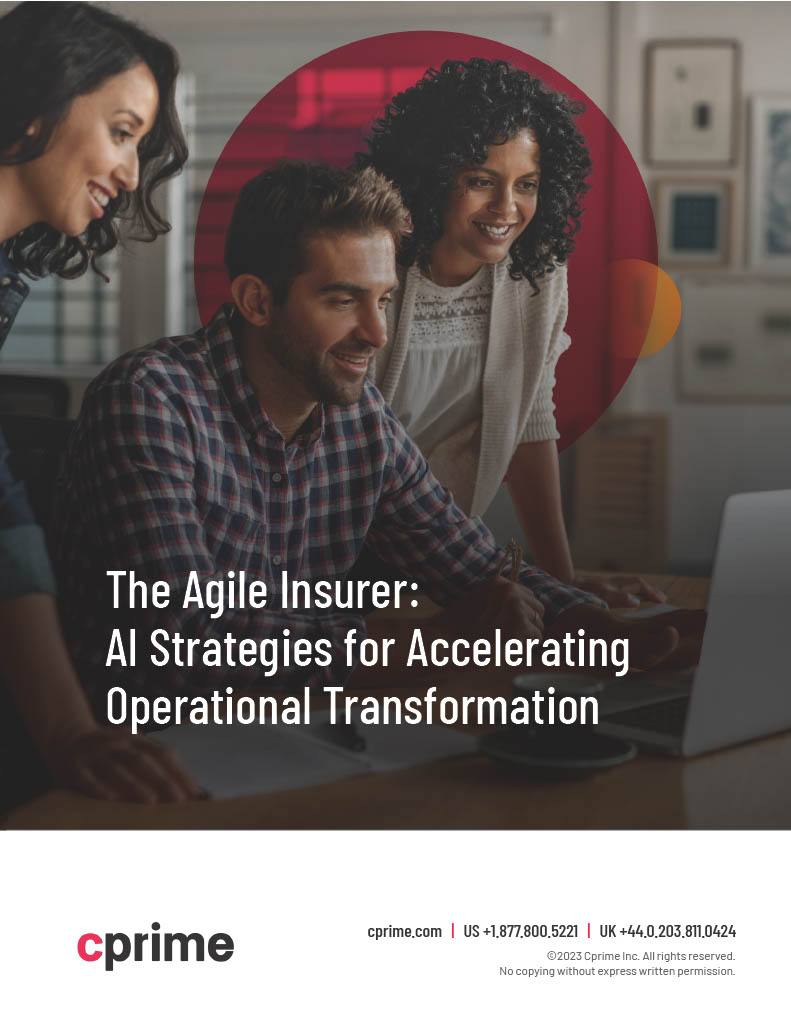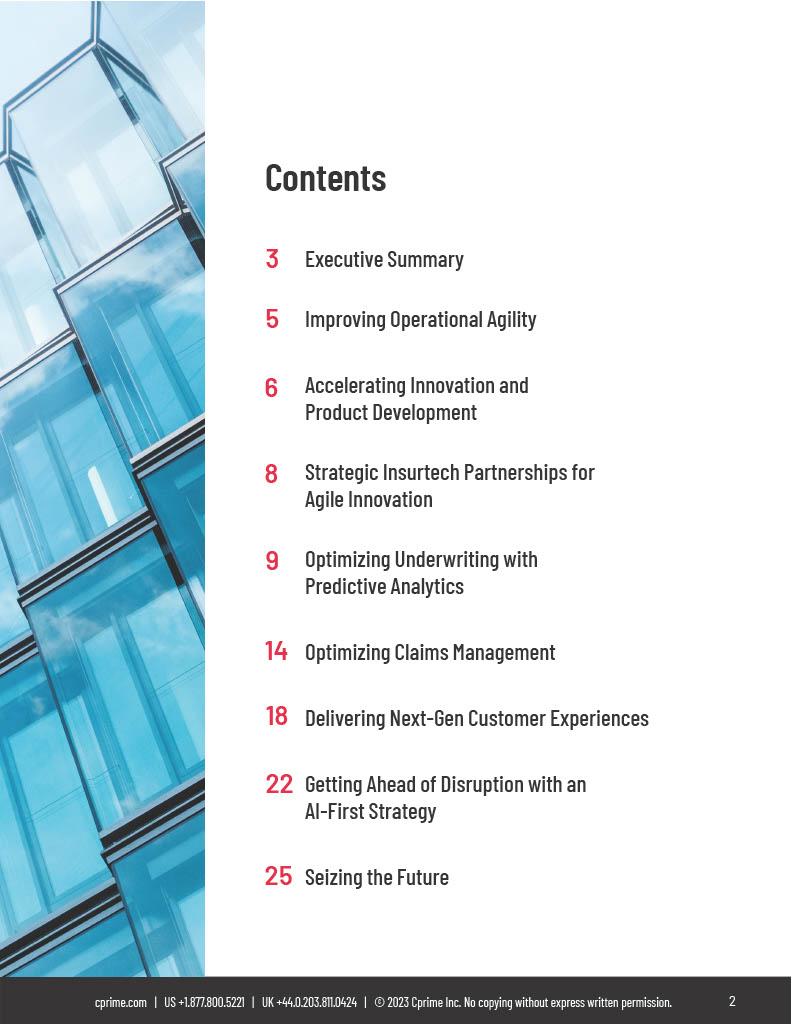Doing more with less has become the mantra for success. Yet monotonous tasks and manual…

The Agile Insurer: AI Strategies for Accelerating Operational Transformation
Executive Summary
To stay competitive in today’s fast-changing business landscape, large enterprises across all industries face mounting pressures to become more nimble, creative, and responsive. The insurance industry is no exception. The accelerating pace of innovation, rapidly evolving consumer behaviors, and intensifying competition mean companies can no longer rely on their scale and existing business models to sustain success.
The stakes could not be higher:
- AI has the potential to generate over $1 trillion of additional value for insurance by 2030 according to McKinsey.
- PwC estimates it could cut insurers’ combined ratio by up to 13.5%.
- According to Accenture, 78% of carriers are already piloting AI initiatives.
- 83% of insurers believe AI will enable them to expand services and value for customers, according to CapGemini.
However, transforming established companies with ingrained legacy processes and siloed departments presents significant challenges. Entrenched ways of working, organizational complexity, and deeply embedded company cultures create inertia and resistance to change initiatives. As a result, many industry-leading incumbents struggle to keep pace with younger, more agile competitors.
Artificial intelligence offers a potentially transformative solution to help large enterprises overcome these challenges and reinvent themselves. Technologies such as AI-powered BI for analytics, machine learning, and natural language processing can provide the tools and capabilities required to break down silos, automate processes, and enable data-driven innovation and decision making. By taking advantage of the scalability, efficiency and predictive powers of AI, legacy organizations can inject new levels of speed, agility, and cost-effectiveness into their operations.
To really capitalize on AI, organizations need to work in an agile way and ensure the work being executed aligns to org initiatives. It’s transformational tech, but layering it onto outdated ways of working won’t help. Agility helps align investments and build the right solutions the right way. Agility is how AI reaches its full potential. – Zubin Irani, CEO, Cprime
This white paper examines the urgent need for change, the barriers faced by established enterprises, and the solutions enabled by artificial intelligence. It provides a blueprint for how AI can be leveraged by large companies to gain a competitive edge, successfully manage digital transformation, and position themselves for success in the future.
The transformative impact of AI in insurance
- AI will increase productivity in insurance processes and reduce operational expenses by up to 40% by 2030. (McKinsey)
- AI in the insurance industry generated $2.74 billion in 2021, and is anticipated to generate $45.74 billion by 2031. (Allied Market Research)
- Claims regulation costs can be reduced with the adoption of AI by 20-30%. (Imaginovation)
- Processing costs can be cut by 50-65% (Imaginovation)
- Processing time can be expedited by 50-90% while improving the customer service experience. (Imaginovation)
- 87% of customers say claims processing effectiveness influences their decision to renew the insurance with the same insurer. (EY)
Improving Operational Agility
Large companies often struggle with ingrained processes, organizational silos, and slow-moving decision making. This makes it difficult to react quickly to market changes and new customer demands. AI can help insurers become more operationally agile in the following ways:
- Automating processes with robotic process automation (RPA) – Software bots can be trained to handle high volume, repetitive tasks like claims processing, paperwork, and customer onboarding. This frees up employees to focus on higher value work. An example is Japan-based Fukoku Mutual Life Insurance which uses IBM’s Watson AI to automate 30% of its workloads including payout calculations and policy amendments.
- Breaking down data silos – Insurers often have customer data trapped in different legacy systems and departmental silos. Using AI for enterprise-wide data integration and analytics helps break down barriers and provide a 360-degree view of the customer. Allianz Germany leveraged AI to integrate disparate datasets and gain a more holistic understanding of its retail banking customers.
- Enabling faster decisions – AI can rapidly analyze both structured and unstructured data to uncover insights that human analysts might miss. This augments human judgment and allows quicker responses to emerging trends and issues. Geico uses AI and machine learning to rapidly process claims and accelerate payouts to customers.
- Supporting Agile practices – AI capabilities can optimize Agile processes like rapid application development, iterative product testing, and continuous delivery pipelines. This allows insurers to bring new products and features to market faster. Lemonade built an AI-driven insurance platform and underwriting process from scratch, enabling greater agility than legacy competitors.
By leveraging AI’s data processing and analytical strengths, insurance companies can gain operational speed, flexibility, and responsiveness to outpace competitors. But it requires coupling technology investments with cultural change towards cross-functional collaboration and flatter organizational structures.
Download the full white paper now to keep reading! –>
Some of the images used were designed by freepik.com



